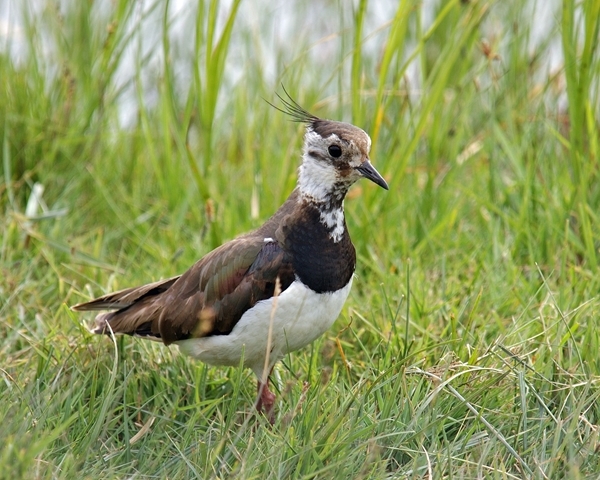
COMMUNITIES in the Strathbraan area of Perthshire approached GWCT in 2016 to help them find ways to improve the breeding and survival chances of wading birds, such as curlew and lapwing, being predated by ravens.
GWCT, with its experience of studies at Otterburn and Langholm and through the Understanding Predation project, agreed to facilitate a community application to Scottish Natural Heritage (SNH) for a licence to understand the effect of reducing the impact of large groups of ravens on wader survival.
Constraints on resources, in terms of both people and time, were recognised early-on by all parties and the need for a proportionate design for the work was addressed. SNH licensed a study that, while falling short of a full scientific study, was a practical response to the identified limitations of such a practitioner-led approach.
The Scientific Advisory Committee (SAC) of SNH has rightly pointed out the rigour that would be required for a full scientific study. GWCT is keen to work with the Committee further to develop a suitable template for future important work in order to better understand the effects of raven predation on wading birds.
Dr Adam Smith, GWCT Scotland director, said:
“It was clear that an opportunity existed to learn about and improve wading bird conservation by reducing raven predation. Acquiring adequate trial data and determining the amount of data that is practical for land managers to gather on raven predation and wader breeding success has been part of the development of this licenced approach. The recent SNH SAC review of the trial, to date, will add to our understanding of the balance needed. GWCT will continue to work with a range of parties to further develop this land manager-led approach to the active conservation of wading birds and to relevant appropriate data gathering.
“The trial in Strathbraan was developed in response to local concerns over predation of wading bird eggs and chicks by ravens. This concern mirrored the SNH-led Understanding Predation project which identified ravens as increasingly likely important predators of ground nesting birds. The project encouraged parties to better understand the need for and effectiveness of reducing predation pressure on a number of species, including the curlew and lapwing which are among the most threatened in the Scotland and the UK.”
Notes:
Conservation status of ravens and wading bird species
• Raven are classified in the UK as Green (of least concern) under the Birds of Conservation Concern 4: the Red List for Birds (2015).
• Curlew are classified in the UK as Red (of highest conservation priority, with species needing urgent action)
• Lapwing are classified in the UK as Red
• Dotterel are classified in the UK as Red
• Woodcock are classified in the UK as Red
• Snipe are classified in the UK as Amber
• Oystercatcher are classified in the UK as Amber
The UK Red List for birds 2015 is the fourth review of the status of birds in the UK, Channel Islands and Isle of Man, and updates the last assessment in 2009. Using standardised criteria, 244 species with breeding, passage or wintering populations in the UK were assessed by experts from a range of bird NGOs and assigned to the Red, Amber or Green lists of conservation concern.
More information on Birds of Conservation concern can be found at https://www.bto.org/science/monitoring/psob and at https://www.rspb.org.uk/birds-and-wildlife/wildlife-guides/uk-conservation-status-explained/
Understanding Predation
The Understanding Predation project derived from The Predatory Birds Report, which was commissioned by the Moorland Forum and published in 2005. At the same time, it was agreed that the updated information provided by the science should be compared with the local knowledge held by those who have a direct connection with the land. This novel approach evolved into the Understanding Predation project, which aimed to establish baseline information about predation that all stakeholders could broadly agree. In view of the novelty and sensitivities, the multi-stakeholder Planning Group worked with SNH over a considerable period to finalise the design of the project plan before the project itself got underway in December 2014, completing with the publication of the Understanding Predation report in 2016.
The report recognised that the need to identify and progress new solutions was urgent. It was also clear that the project inspired significant momentum and a desire for continuing collaboration, particularly around stimulating local communities to record wading bird abundance and productivity in standardised fashion, building on their local knowledge, and around assessment of predator abundance so that their conservation needs can be ensured. The report recognised the opportunity to harness that momentum and collaborative spirit to tackle issues that have long needed to be more effectively addressed.
More information on the Understanding Predation project and report can be found at http://www.moorlandforum.org.uk/understanding-predation-report-launch
Notes to editors
The Game & Wildlife Conservation Trust is an independent wildlife conservation charity which carries out scientific research into Britain’s game and wildlife. We advise farmers and landowners on improving wildlife habitats. We employ 22 post-doctoral scientists and 50 other research staff with expertise in areas such as birds, insects, mammals, farming, fish and statistics. We undertake our own research as well as projects funded by contract and grant-aid from Government and private bodies. The Trust is also responsible for a number of Government Biodiversity Action Plan species and is lead partner for grey partridge and joint lead partner for brown hare and black grouse.
For information, contact:
Playfair Walker
Telephone: 0131 445 5570
Email: richard@playfairwalker.com